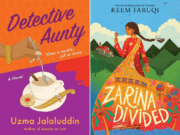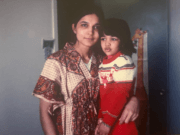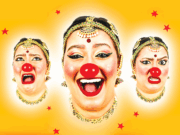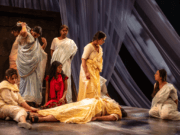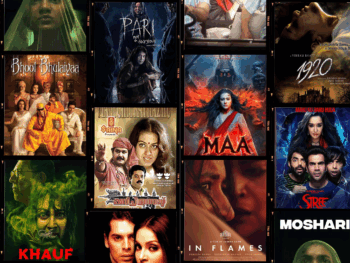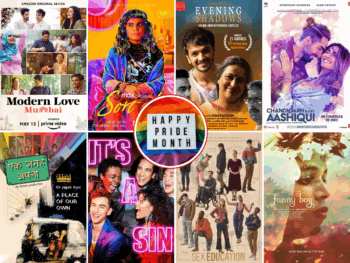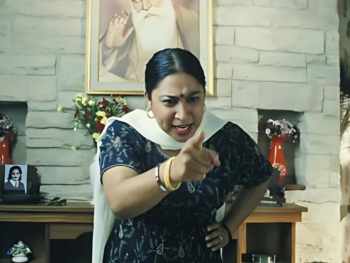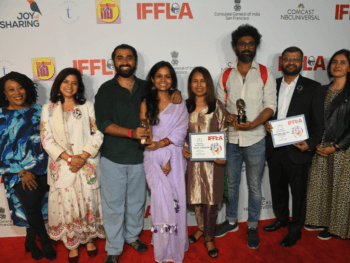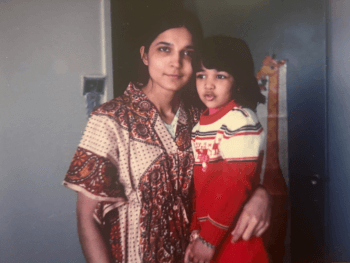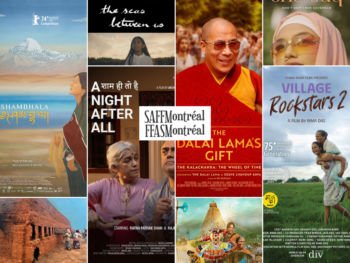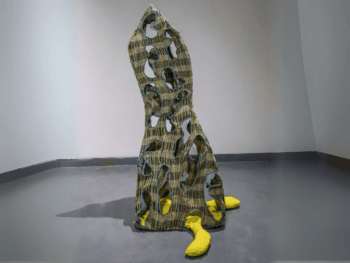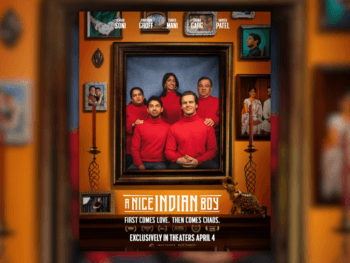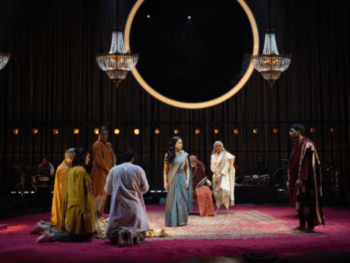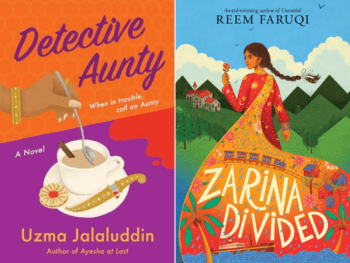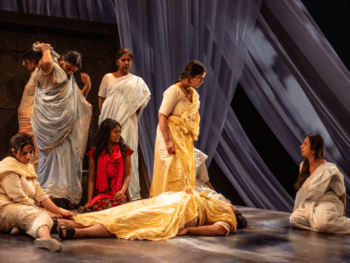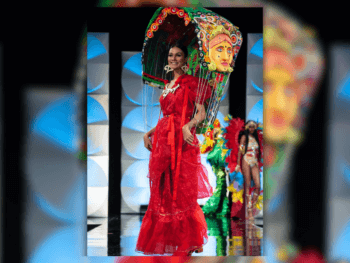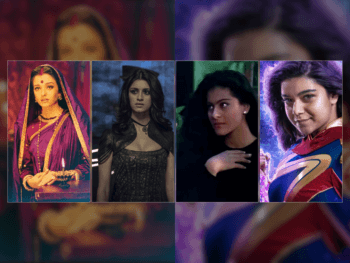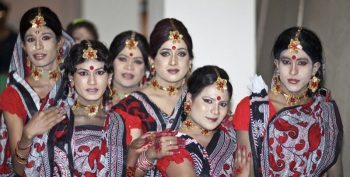
As global Pride Week is in full effect, we examine the relationship that South Asia has with the LGBTQI community. In part one of this discussion we take an historical look at the hijras of South Asia.
While today’s headline-grabbing debate about the rights of the transgendered community rages on (and on), buoyed by politicized fear-mongering on one side and the emphasis for the need for empathy and understanding as the core principals of human rights on the other side, it can be easy to categorize this specific battle as something relatively new to our collective societal consciousness.
But what if you remove western civilization from the global equation and focus on the South Asian subcontinent? One can easily forget the fact that the transgendered community flourished in India for thousands of years — thousands of years before Caitlyn Jenner graced the cover of Vanity Fair magazine.
Often distinguished by their love for over-the-top colourful saris, their penchant for singing and exuding confidence that would make Beyoncé blush, hijras have been a contributing sector of South Asian society dating back to approximately 4,000 years ago.
The term “hijra” includes those who are transgendered, transsexuals, cross-dressers and hermaphrodites as well as those who refuse to be gender specific in their identity. Some may or may not have undergone castration.
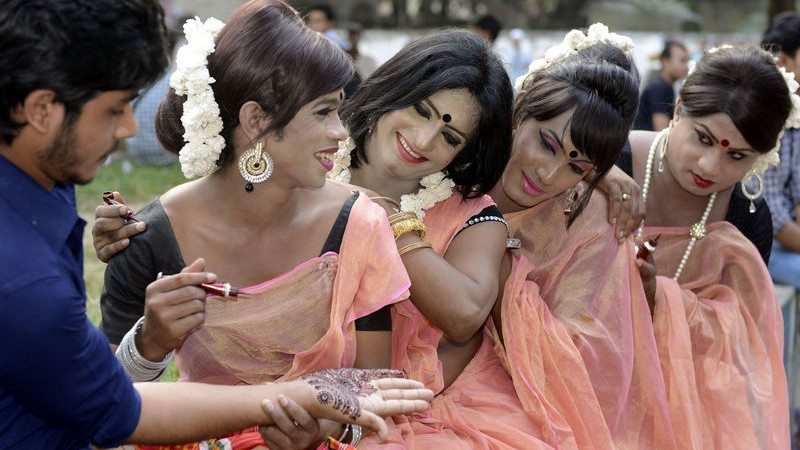
Photo Credit: www.globalvoices.com
Religious Documentation
Hijras and gender-switching scenarios have long been documented in Hindu religious text.
In the Mahabharata, Arjun is sent into exile. There he takes on the identity of a transvestite and performs rituals during weddings and childbirths. These rituals, deemed to bring blessings, are practiced by hijras of today.
Another instance documented in the Mahabharata is Ahiravan offers his blood to goddess Kali to ensure victory in the Kurukshetra War. In southern India, hijras identify themselves as “Aravanis.” Their spiritual dedication is celebrated during an 18-day festival at the Aravani temple in Koovagam, Tamil Nadu.
The blessings practice can also be threaded back to the Ramayana where one scenario describes Rama leaving Ayodhya for a 14-year exile. His legions of devotees follow him into the forest. Rama encourages his followers to return back to Ayodhya. Fourteen years later, after the completion of his exile, Rama returns to the place in the forest where his devotees once were and sees that the hijras remained.
Moved by their sense of devotion, he gives them the power to give blessings (commonly know today as bidhai) on people during momentous life occasions such as birth of children and weddings. It’s not uncommon (and expected for that matter) for a group of dancing and singing hijras to approach a wedding party to give their blessings in exchange for donations.
Hijras usually fall into two separate religious tribes (or they can follow both ideologies). They practice rituals that are for both men and women, in keeping with their belief of gender ambiguity.
Bahuchara Mata is a Hindu goddess who, depending on which story is followed, has actively involved a transgendered scenario when it came to telling her life story. Both tales involved men. One instance Bahuchara Mata was a princess who castrated her husband because of his penchant for running in the woods and acting in a feminine manner instead of sharing sexual relations with her.
In another tale she was the survivor of an attempted rape so she cursed the man responsible with impotence. She would only remove the curse if the man agreed to run into the woods and act like a woman. Known as the patron saint for hijras, Bahuchara Mata’s temple in Gujarat is seen as a holy shrine.
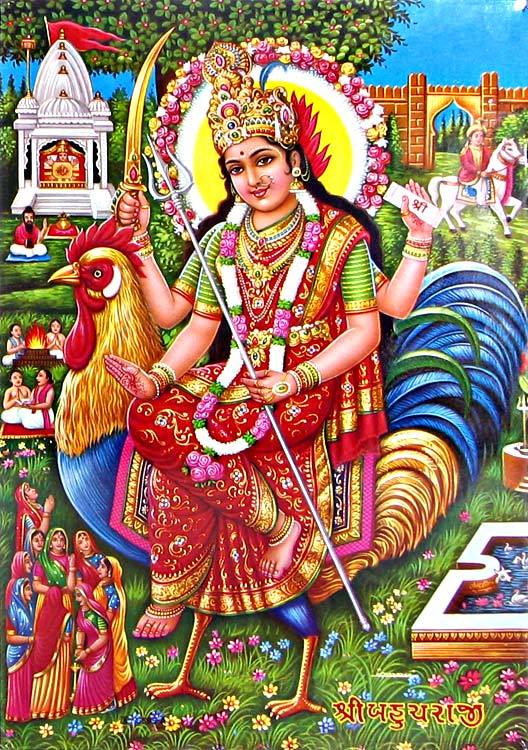
Photo Credit: Tumblr.com
During the heyday of ancient civilization, hijras were seen as productive members of society including landowners, “ritualistic status as bestowers of fertility,” as well as varied powerful positions in Moghul India.
“The vilest and most polluted beings.”
It wasn’t until the start of the British Raj in 1858 when colonization and discrimination came into play and the systematic dismantling of the hijra society took hold. The British were disgusted while at the same time took a perverted interest in a community that was so foreign to them. Deemed as an unfavourable aspect of a greater society that boasted backward tribal rituals and practices, the criminalization of hijras was implemented with the Criminal Tribes Act of 1871, and the hijras were classified as a criminal tribe, inherently immoral and corrupt.
Even 19th century British travel writers didn’t mince words when it came to describing hijras (“eunuchs” as they were commonly referred as) with one travel writer by the name of Mrs. Postan calling them, “The vilest and most polluted beings” fabricating unproven practices of various barbaric acts. This lead to the further alienation of the hijra society thus creating various communes and secret support systems helmed by “gurus,” a mother-like matriarch who would support and protect her fellow hijras. A secret language was also created. “Hijra Farsi” helped hijras stay connected while under the radar of the British imposed law.
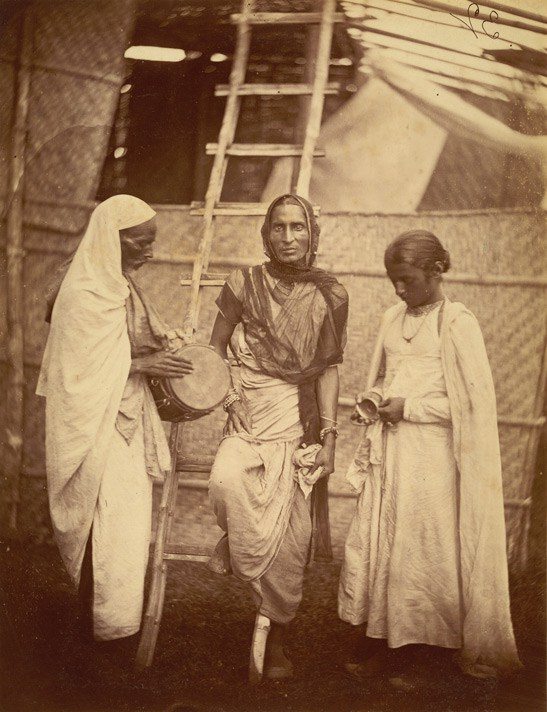
Photo Credit: British Library Board (Photo 124 (38)/www.notchesblog.com
Redemption
Even though the Criminal Tribes Act of 1871 has long been discounted as law, the taboo unfortunately has engrained in the psyche of Indians since then with the continued marginalization of the hijra community. They are rarely hired by traditional professions thus reverting to blackmail and the sex trade for survival. The blessings in exchange for donations continue to be a vibrant element of wedding celebrations to this day.
It took nearly over a hundred years for proper support systems to take their place in Indian society. They were granted voting rights in India in 1994. Four years later, Shabnam Mausi became the first hijra to be elected to public office in Madhya Pradesh State Legislative Assembly. Inspiring many hijras to be politically active, the first hijra-led political party was born in Madhya Pradesh called Jeeti Jitayi Politics (JJP).
Support systems also took hold. In 1999, Sangama was born, a charitable foundation funded by various philanthropic entities including the Bill Gates Foundation and the Fund for Global Human Rights. Sangama’s focus is to organize protests and create support systems for the LGBTQ community by way of drop-in centres and safe places for those who find themselves in various marginalized sexual communities. AIDS and HIV awareness is paramount with various programmes including condom distribution activities. An urgent health care issue as according to Sanagama, “18 to 20 per cent of hijras are HIV positive.”
In Bihar, the government found a way to utilize the hijra’s unique presence. Since 2006, they have been employed as tax collectors. They would stand in front of the property and sing loudly about the debt, basically shaming the receiver on the other end of these serenades to pay up. Not surprisingly, this form of collecting has been the most effective strategy of debt collection to date for Bihar.
With documented records of discrimination, harassment including abuse by the hands of the police, it wasn’t until 2014 when hijras could exhale. Thanks to a ruling by the Supreme Court of India, the hijra community were officially recognized as a third gender with all rights of recognition being extended to “official documentation for the transsexual, transgender and cross-dresser communities.”
Today hijras are seen as productive members of society with various hijras taking hold in public offices as well as participating in various causes including the 2014 PSA for seatbelt wearing awareness.
Hijras have endured a long road for acceptance, but with the opening of minds and acceptance here’s hoping that the transgendered community of all stripes are able to continue to fight for their deserved place in today’s society — in South Asia and beyond.
Main Image Photo Credit: www.gaweeklypost.com
Hina P. Ansari
Author
Hina P. Ansari is a graduate from The University of Western Ontario (London, Ontario). Since then she has carved a successful career in Canada's national fashion-publishing world as the Entertainment/Photo Editor at FLARE Magazine, Canada's national fashion magazine. She was the first South Asian in...














